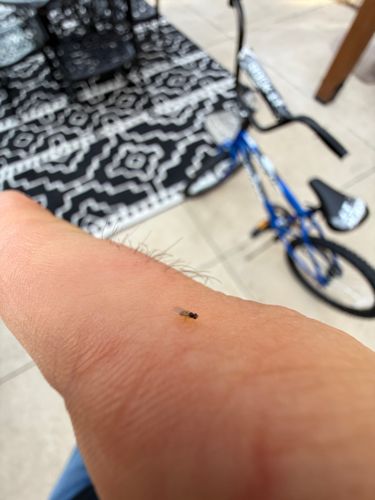Fruit Fly
Scientific Name: Drosophila melanogaster (typically, though other species exist)
Order & Family: Diptera, Drosophilidae
Size: 2-4 mm (0.08-0.16 inches)

Natural Habitat
Commonly found in kitchens, restaurants, and anywhere fermenting fruits, vegetables, or sugary substances are present. They are attracted to decaying organic matter.
Diet & Feeding
Primarily feeds on yeast found in fermenting fruits and vegetables. They are also attracted to sugary liquids, alcohol, and decaying organic material.
Behavior Patterns
Fruit flies have a rapid life cycle, reproducing quickly in suitable conditions. Females lay eggs on fermenting food, which hatch into larvae that feed on the decaying matter. They are highly attracted to ripe or overripe produce and are known for their erratic flight patterns.
Risks & Benefits
Potential risks include being a nuisance pest in homes and commercial establishments. They can contaminate food with bacteria and yeast as they move between decaying matter and fresh produce. While generally not directly harmful to humans (they don't bite or sting), they can spoil food and are a sign of unsanitary conditions. There are no direct benefits to humans, but in ecosystems, they help in the decomposition of organic matter.
Identified on: 10/17/2025